In times past, the high-tech sector was globally looked up to as being home to jobs and innovation. This time it is different: major corporations are shedding staff in their thousands and even tens of thousands. Large corporations like Microsoft, Google and Apple are being forced to layoffs after having made these globally strategic decisions aimed at cutting costs. Meanwhile, this wave of job losses is not confined to the IT sector alone but part of a worldwide trend in a variety of enterprises.
The Scope of the Layoffs: A Global Perspective
Layoffs have erupted in the tech sector this year, with many large companies downsizing to a greater extent than usual. Below are examples of some major companies and their reported cutbacks in staff.
1. Microsoft: Microsoft has approximately layoffs 10,000 employees, in the engineering and HR function. The job cuts are part of a larger restructuring plan to lower operating costs and further focus on its strategic areas, including cloud computing and artificial intelligence (AI) development.
2. Google: Google has laid off around 12,000 employees, one of its largest reductions in force ever. The layoffs have affected many different departments including product development, marketing and support teams. Among the reasons Google gave for cutting jobs included a desire to “streamline operations” and focus on long-term strategic priorities.
3. Apple: Apple layoffs have been more targeted, with about 3,000 employees most notably in hardware development and retail operations. The company has faced decline in the demand of products, leading to a resource allocation and workforce needs.
4. Meta: Meta (formerly known as Facebook) cuts 8,000 jobs in 2024; the latest reduction follows a cut announced last month of about one-fifth of all its employees The reason for these layoffs is a part of Meta’s long-term progression towards creating the metaverse, requiring changes in skill sets and expertise areas within the company.
5. Amazon: Amazon has let go of 15K employees in its e-commerce and logistics sectors. The company is adapting to new, post-pandemic customer behaviors and the imperative in fine-tuning its sprawling supply chain network.
6. Salesforce: Salesforce has also been affected, with an estimated 5,000 employees laid off due to sales and customer support. The business is optimizing its resources, increasingly adopting cloud-based services and to manage costs effectively.
7. Intel: Intel has made its reduction of about 7,000 jobs in the third quarter focusing on costs less and sharpening out the semiconductor heart against competition while dealing with issues across its supply chain.
8. Twitter: Twitter laid off 4,000 employees in 2024 after Elon Musk takeover The layoffs are part of Musk’s effort to address the financial constraints in order and cost streamlining strategy.
9. IBM: IBM downsized more than 4,500 jobs primarily in its legacy business units. This new focus on newer territories, such as quantum computing and AI means different demands from what it has done traditionally.
One part of this was driven by market dynamics and financial pressures, another by the evolution in new technology or the strategic realignment of the business.
Reasons Behind the Layoffs
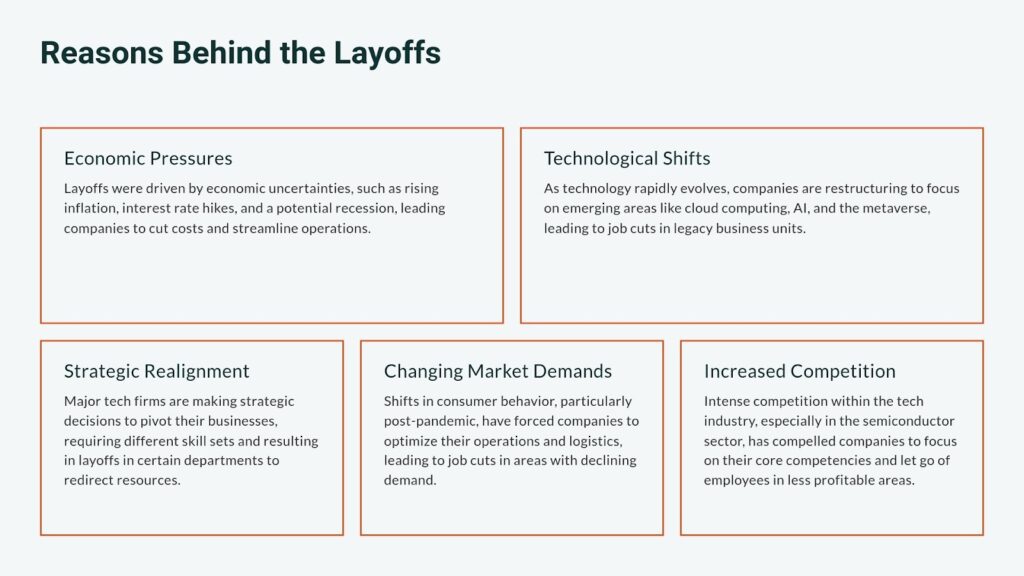
These layoffs, sparked by a lot of reasons like, economical, technological and strategic in nature all at once. Each of these big organizations is letting people go for exactly how many reasons?
1. Microsoft:
Microsoft layoffs are mainly made necessary by the need to reorient its own situation in the face of quite extreme economic difficulties, and also has the same reason as a pivot—namely high-growth areas like cloud services and AI. In such a climate of rapid change, the enterprise needs to redirect resources from poor segments so it can keep pace with overall competitiveness and market trends.
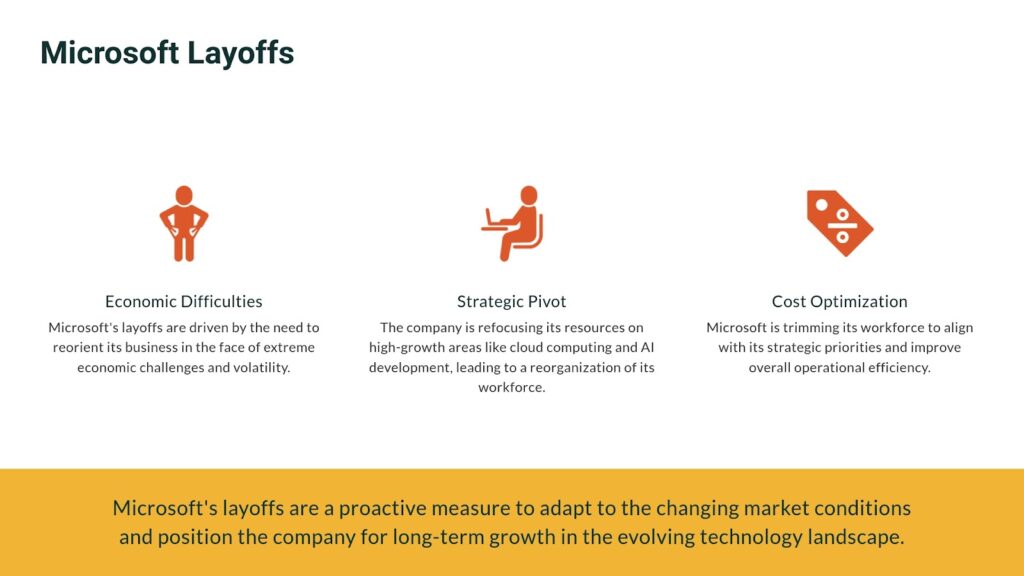
2. Google:
Google layoffs are due to a strategic shift, away from quick results and toward long-term projects and AI-cloud computing innovations. The company is under pressure from investors who want increased earnings per share (EPS), requiring different departments to cut costs.
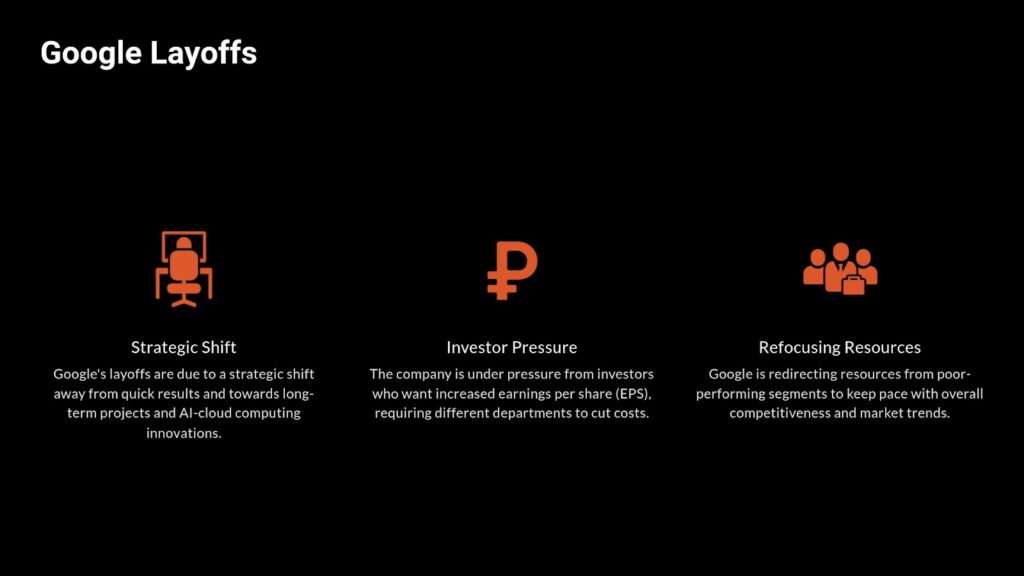
3. Apple:
Apple layoffs are just one part of the impact of ever sagging demand for certain hardware. It is also having to trim its operations. The company is enriching the biochemical field, making use of materials like AR/VR and requiring a different sort of manpower.
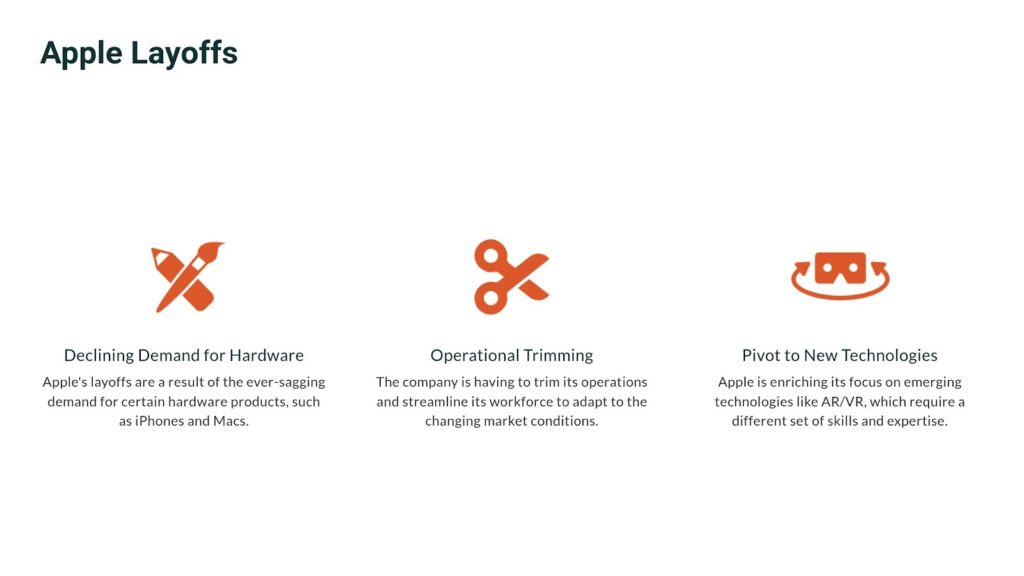
4. Meta:
Meta layoffs are a part of its overall move towards the metaverse. Meta has had to make a strategic shift, with change in the company’s character and industriousness. Jobs are being axed in line with the new direction.
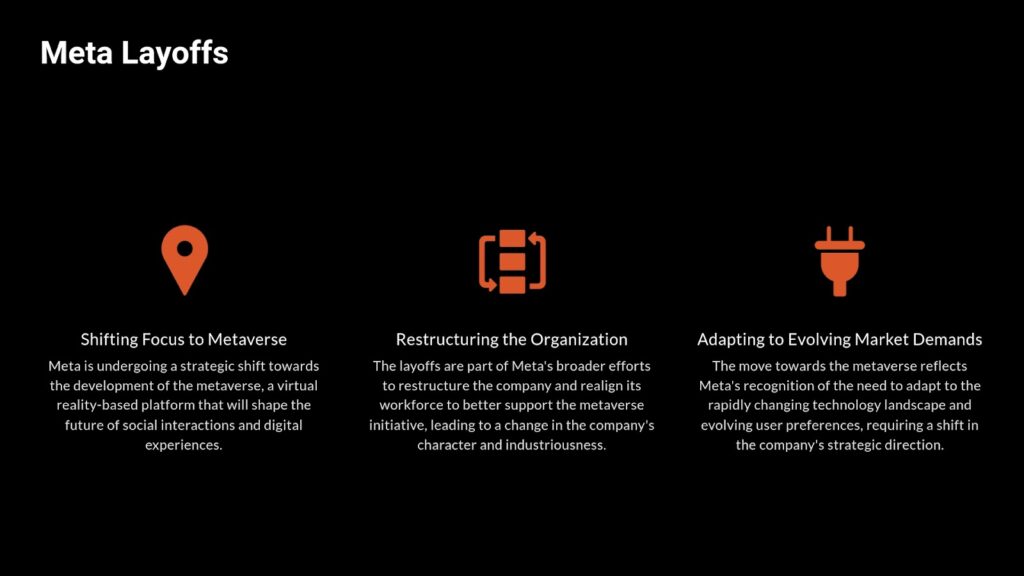
5. Amazon:
Amazon layoffs are due to post-pandemic shifts in consumer behavior. This has brought over-capacity in the logistics and e-commerce divisions. The company is concentrating on streamlining its operations so that they will chime in more with today’s market.

6. Salesforce:
Salesforce layoffs are as a result of the company’s decision to reorient itself with the needs of slow market growth and a stagnating economy. It is centering on its basic cloud services and cutting costs in less profitable areas.
7. Intel:
Intel layoffs arise from increased competition within the semiconductor industry. The company finds it necessary to stick closer to its core business areas in order to avoid unnecessary risks. And there are still supply chain problems, affecting its revenue.
8. Twitter:
Twitter layoffs are part of Elon Musk’s broader plan to simplify the company by shutting down units and reducing costs as overall demand falters. Advertisements and performance in general are other areas of concern for the company.
9. IBM:
IBM layoffs are due to the company’s shift away from its old business areas towards new technologies such as quantum computing and machine learning. The company spends time positioning itself in those emerging markets.
The Impact on the Global Workforce
Moreover, the impact is not limited to the tech sector alone. Industries that rely on tech for their operations, such as finance, healthcare, and retail, are also affected when tech companies cut back services and support. This can lead to a cascading effect, with job losses spreading across multiple sectors. For those who continue to be employed, the work environment may become increasingly stressful and uncertain. Fear of further layoffs can lead to lower morale and productivity which makes a difficult situation for both employees and management.
By analyzing trends and job market data, JobsPikr provides businesses with a detailed understanding of how layoffs in one industry may affect others, helping companies mitigate risks and anticipate potential disruptions in their workforce needs. Making informed decisions is crucial for businesses, especially during uncertain times like the current wave of layoffs, the companies need tools that can provide real-time insight into market trends.
JobsPikr, is a powerful DaaS (data-as-a-service) platform that provides businesses with real-time data on job postings, skill demands, and industry-specific trends. By analyzing layoff patterns and market dynamics, companies can make data-driven decisions to optimize hiring, reallocate resources, and stay competitive. JobsPikr’s comprehensive insights allow businesses to benchmark against industry standards, identify emerging opportunities, and navigate the complexities of a changing workforce landscape with confidence.
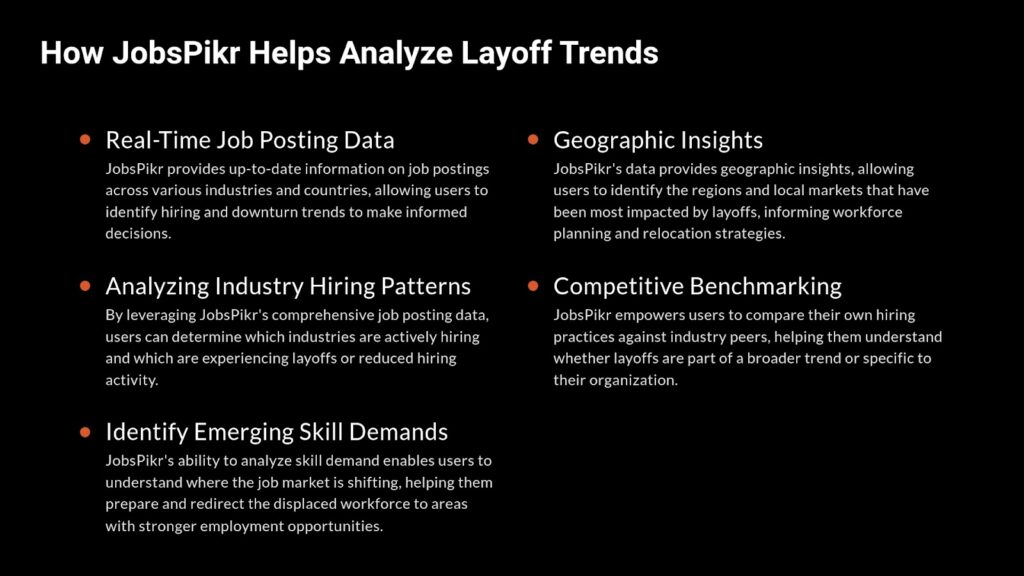
Practical Applications of JobsPikr
- For Businesses: By using JobsPikr, businesses can calibrate their talent acquisition strategies based on real-time market data. Understanding which locations have the highest demand for specific skills means that companies can put their spending in areas most likely to yield results.
- For Analysts and Researchers: JobsPikr ’s data can help labour market analysts and economists track and summarize employment trends, providing valuable insight in the performance of different industries across different parts of the country as well as the whole economy.
Conclusion
The wave of layoffs in 2024 is a stark reminder of the volatility that can exist in even the most robust industries. These layoffs are attributed to various factors, including economic uncertainties, post-pandemic corrections, and technological advancements. Microsoft, for instance, is reallocating resources towards AI and cloud computing, while Google is focusing on long-term strategic projects. Apple is adjusting to declining demand for certain products, and Amazon is optimizing its operations in response to changing consumer behavior.
As the global economy continues to shift, staying informed and adaptable is essential. Leveraging data-driven tools like JobsPikr allows stakeholders to better understand the shifting landscape and position themselves for success in the post-layoff economy by providing real-time insights into job market trends.
Reference:
https://www.pwc.com/gx/en/issues/workforce/hopes-and-fears.html



